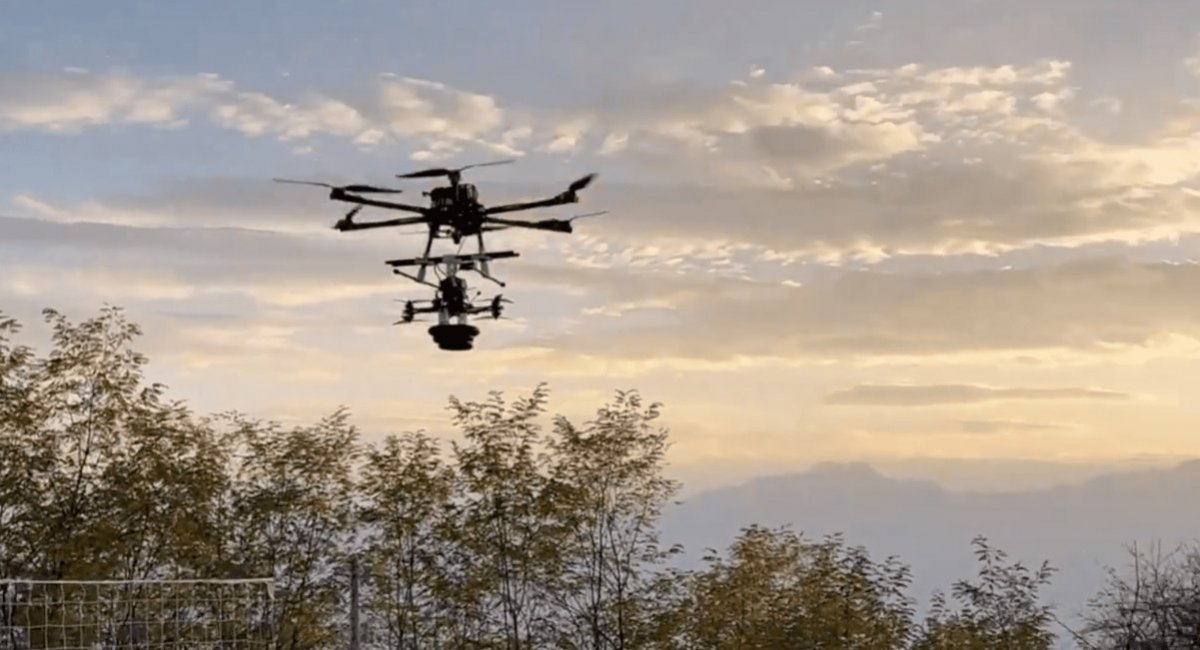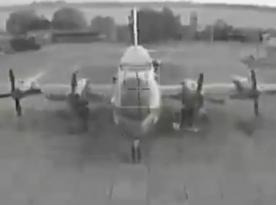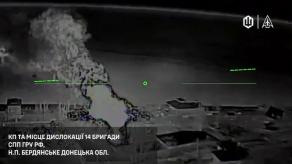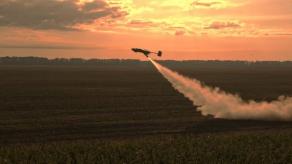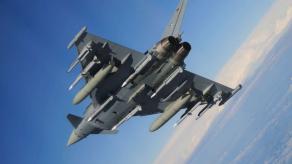A recent video published by the Telegram channel In Factum provides evidence that the concept of multirotor "drone carriers" is currently being tested on the battlefield in Ukraine.
The video displays testing of an unmanned hexacopter carrying a smaller FPV drone, which is believed to have been filmed by the russians — though there are also numerous reports on the network claiming that the Ukrainian soldiers were making use of similar drones, the authenticity of which is yet to be verified.
Read more: Ukrainian Lodgements on the Left Bank of the Dnipro, a Surprise Attack Sparks Panic Among russian Forces
The video includes a cartoon, most likely created by the russians, that explains the working principle of this development.
The concept of attaching an FPV drone to a heavier copter so it takes off behind enemy lines, thus increasing its range, is not new.
The cartoon suggests that the FPV drone by itself can destroy targets within a 5 km distance from the starting point, although the actual range is still somewhat unclear as FPV drones have been known to find targets from as far as 10 km away.

The multirotor "carrier" is capable of delivering the FPV drone to a launch point 10 km from the operator, and an additional 5 km the FPV can travel on its own, resulting in a total range of 15 km. The multicopter may also function as a relay for the signal from the controller, despite not being explicitly stated in the video.
In fact, the figures presented in the video might be schematic, while the essence is that such a combination can increase the attack range of explosive FPV drones.
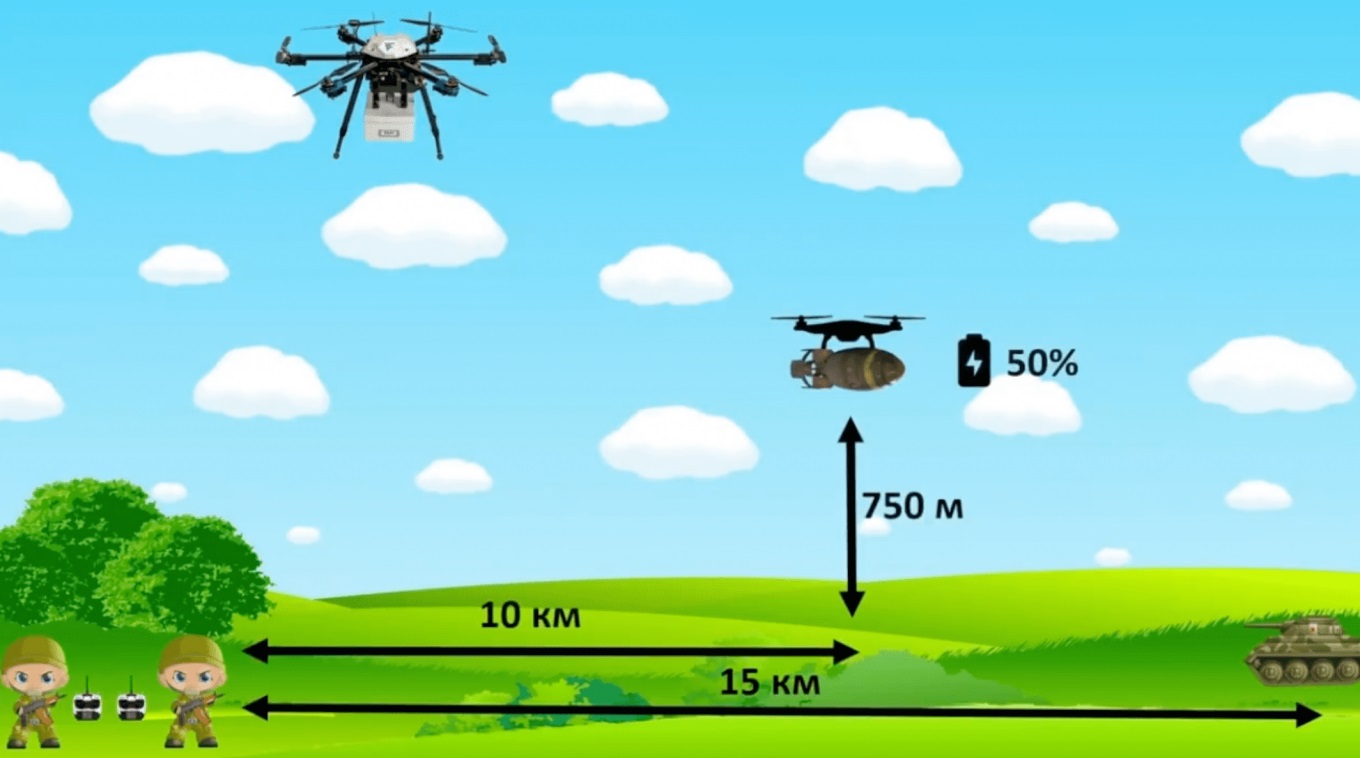
As mentioned, apart from the schematic cartoon, there is real-life footage from the field tests: a multicopter successfully released the FPV drone and the latter reached the designated target.
This development could pose a significant threat as the russian forces might already be testing this technology on the battlefield, and this method of increasing the range of FPV drones could be highly dangerous considering how many of them are used on the battlefield.
On the bright side, the Ukrainians use FPVs even more frequently, roughly three times outnumbering the russians in that department.
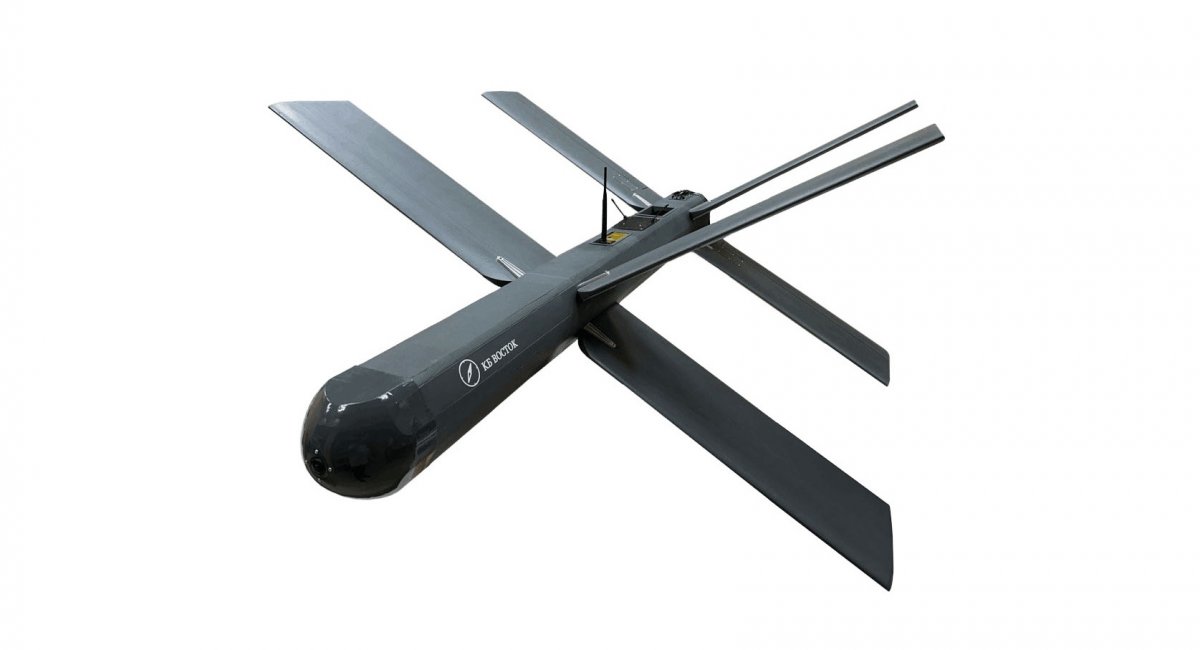
The question persists, though, of why the russians are resorting to such sophisticated technology when they are already developing new Scalpel suicide drones with a declared flight range of 40 km.
But we should keep in mind that these drones are still in limited production, it is logical to assume that the russian forces will utilize all available tools and opportunities to improve their weaponry, regardless of how strange or illogical it may appear.
Read more: It Became Known How Many "Scalpel" Loitering Munition the russian Invaders Received, How Much They Cost




